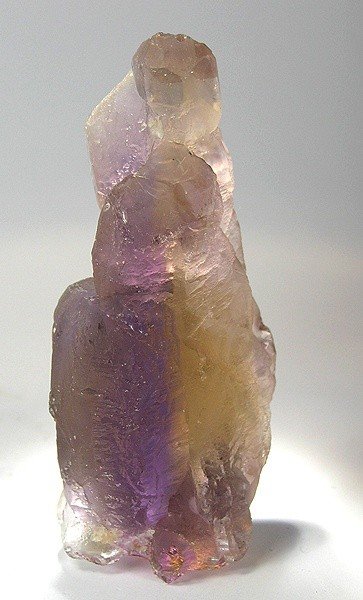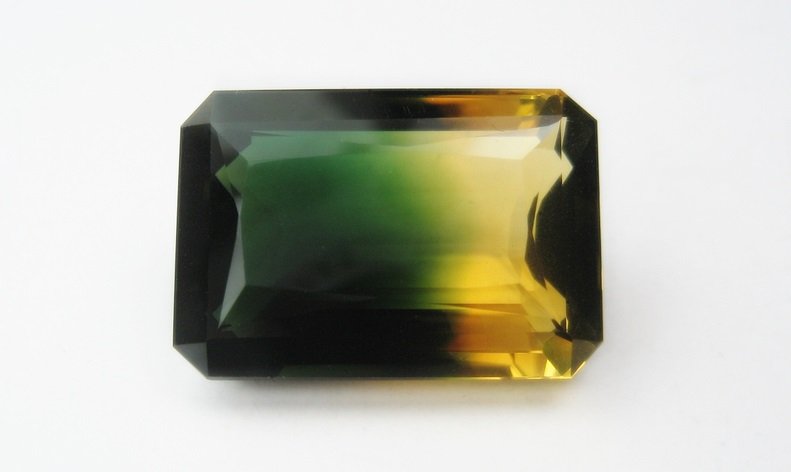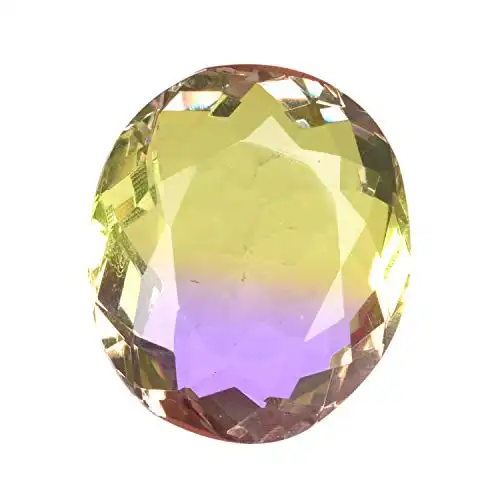Ametrine is an oddity, a purple and yellow type of quartz that combines two evergreen favorites. When citrine and amethyst meet in the same crystal, the result is a splendid bi-colored crystal that can be cut into jaw-dropping gemstones. With such a wide market, however, it can be hard to determine if what you’re buying is real.
But how do you know if your crystal or gem is real or not? Let’s take a look at some of the tell-tale hints that will let you know for sure.
Related: (Real vs Fake Citrine) How To Tell If You Have Real Citrine or Not.
How To Tell If Ametrine is Real or Fake
1. Provenance
If the gemstone is listed with provenance, then it should almost always be from the Anahi mine in Bolivia. This is the only place where the stones are found in commercial quantities.
The mine itself was lost for quite some time, and it remains remote and virtually inaccessible to most people. The only way in is to take a small aircraft or a series of shorter treks by boat and road. There is no easy access.
This is a dead giveaway that you’re looking at a synthetic or simulated ametrine, and it’s one I’ve seen more than once.
Of course, every scam artist who does even barebones research is going to claim their material came from Bolivia. Consider this evidence that it might be natural ametrine, but you’ll need to do more footwork to make sure.

2. Pricing
Ametrine is expensive these days since it only comes from one mine. That might feel surprising, especially if you’ve looked up gemstone prices recently since it seems that ametrine can be had for a few bucks per carat on a regular basis.
Most of these are scams. Some might be very pale and almost not worth cutting in the first place. The latter could be natural, pale ametrine isn’t in very high demand. People really want the deep purple/yellow with a clearly defined boundary and most natural material that’s affordable is simply isn’t that pretty overall.
Ametrine that is eye-clean, deeply saturated, and well defined is either not natural or comes with a high price tag. I’ve been unable to find any high-grade stones I’m certain are natural for under $800, and that’s definitely on the cheap end of things.
Synthetic ametrine can be created by treating natural quartz crystals. There are various methods, including localized heat treatment of amethyst similar to the technique used to create the majority of citrine on the market.
More of it is created through the treatment of hydrothermally grown quartz. The solution used to create the quartz is doped with the proper ions, and then the crystal is exposed to radiation once it’s been grown but before cutting.
While beautiful, and real quartz, this sort of ametrine isn’t natural and it should be disclosed as such if you choose to sell it either on its own or within a piece of jewelry.
3. Ametrine is Always Yellow and Purple
This might seem obvious, but there are a number of people selling ametrine with blue or green tones in it. These may be natural crystals, but they didn’t get pulled from the earth as ametrine!

Some people skirt the boundaries here. On occasion standard clear quartz that was mined in Bolivia is treated and sold as “natural ametrine.” This is technically true, but any true ametrine that emerges is invariably yellow and purple with no other dominant tones.
On occasion a piece of ametrine may have more than one area of yellow or purple, often spread around a central point. It’s unlikely that this is natural in most cases, but there were some gemstones from early on in the Bolivian mine’s commercial work that showed these properties.
Color saturation is also a major factor. Most natural ametrine currently on the market is rather pale in color, a stark contrast to the material from decades ago. A deeply saturated, affordable ametrine is immediately suspect as noted above.
Related: Synthetic Gemstones (Everything You Need To Know)
4. Comparing the C-axis to Color Boundaries
The c-axis of a gemstone is also called the optical axis. This is a direction through the crystal which causes no birefringence, or separation of the light. Finding one is a bit of a specialized task but it can be learned effectively at home if you pick up a polariscope. You can also make one at home with a little bit of DIY skill.
Essentially, the C-axis will show when you have the gem or crystal at an angle where it looks uniform in coloration.
Having found the c-axis, you’ll easily be able to determine if the stone is natural or synthetic. Almost all natural ametrine will have a color boundary that runs nearly parallel to the c-axis, being off by 10 degrees or so at most.
Synthetic ametrine, on the other hand, will vary from 20-38 degrees or so off of the c-axis due to the way they’re grown.
While a bit complicated, this is the best way to tell without getting into actual gemology training. It’s a handy trick and easily determined once you’ve found the c-axis of the crystal, and it doesn’t require any expensive equipment.
Most people are free to stop here, but if you really need to know 100% there’s one more step that should be taken.
5. Take it to a Gemologist
There are a number of factors that can let you know if the crystal you have is synthetic or natural. Most of them require a ton of expensive equipment and know-how that goes a bit beyond that held by most rockhounds and lapidaries.
Having your ametrine certified one way or the other by an expert takes the matter out of your hands. An appraisal may also give you a rough idea of how much it’s worth.
An appraisal will generally run anywhere from $50 to $150 per hour and shouldn’t take too long. It’s definitely worth it if you think that you have a high-end sample of natural ametrine.
This is the only way you’ll be 100% certain without going to a school for gemologists and getting a degree yourself, and having access to the expensive equipment used for gem verification.
That said, just checking the c-axis to color boundary should be a good enough indicator for the majority of collectors and hobbyist jewelers.
- Online rock and mineral club for collectors of all levels!
- Find community with like-minded rock and mineral enthusiasts.
- Monthly Giveaways!
- Free Access to Entire Digital Library of Products (annual memberships)



